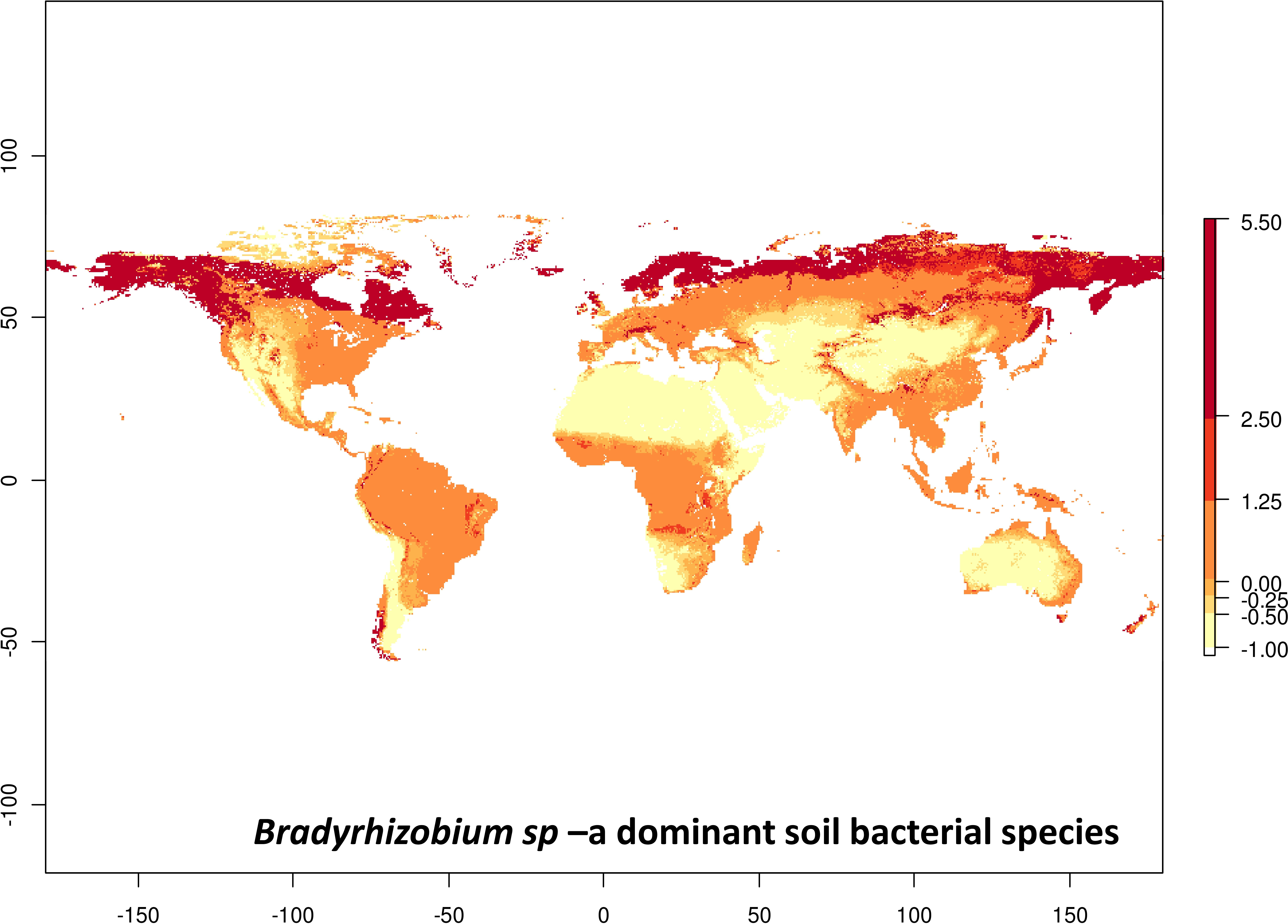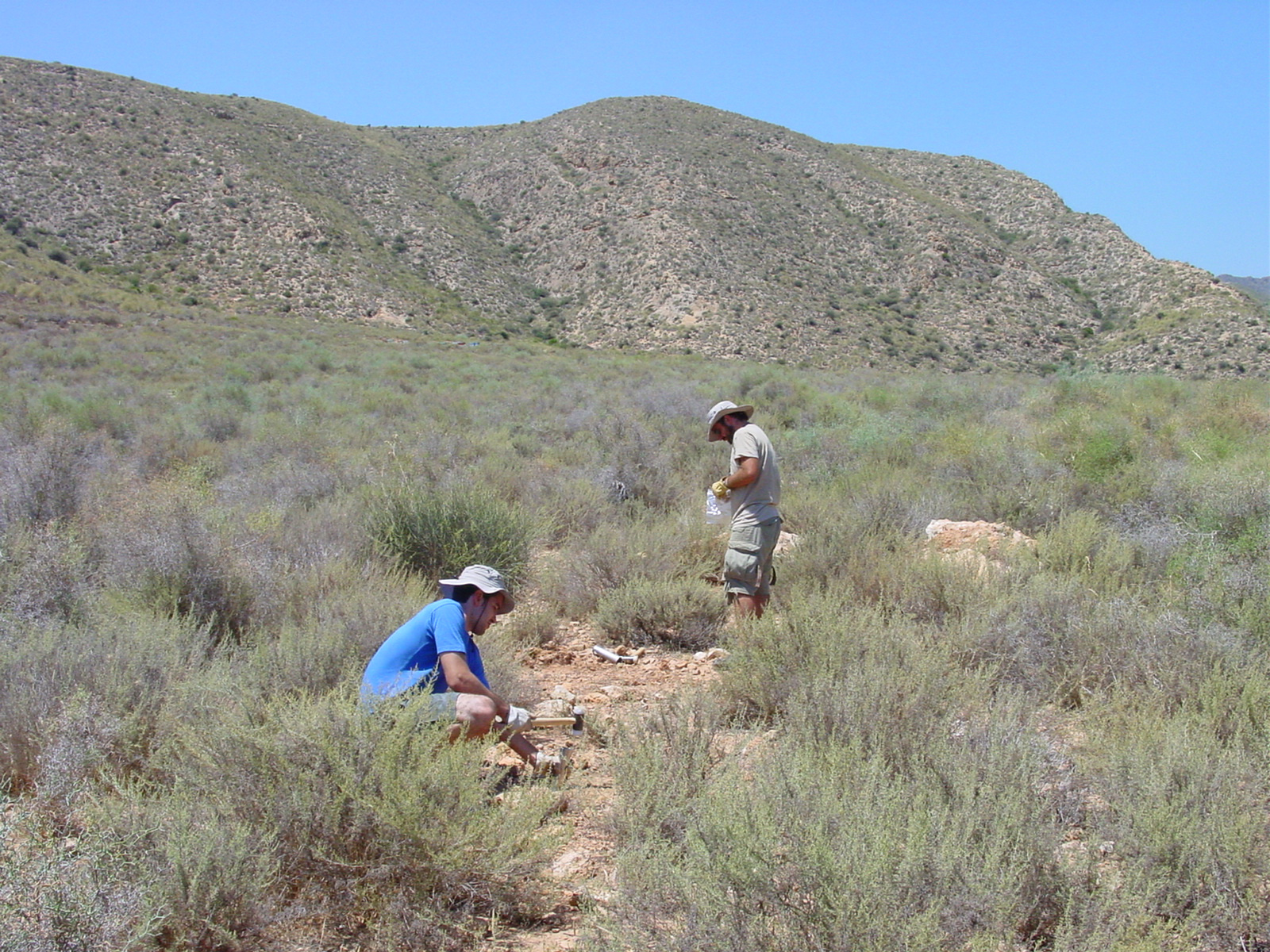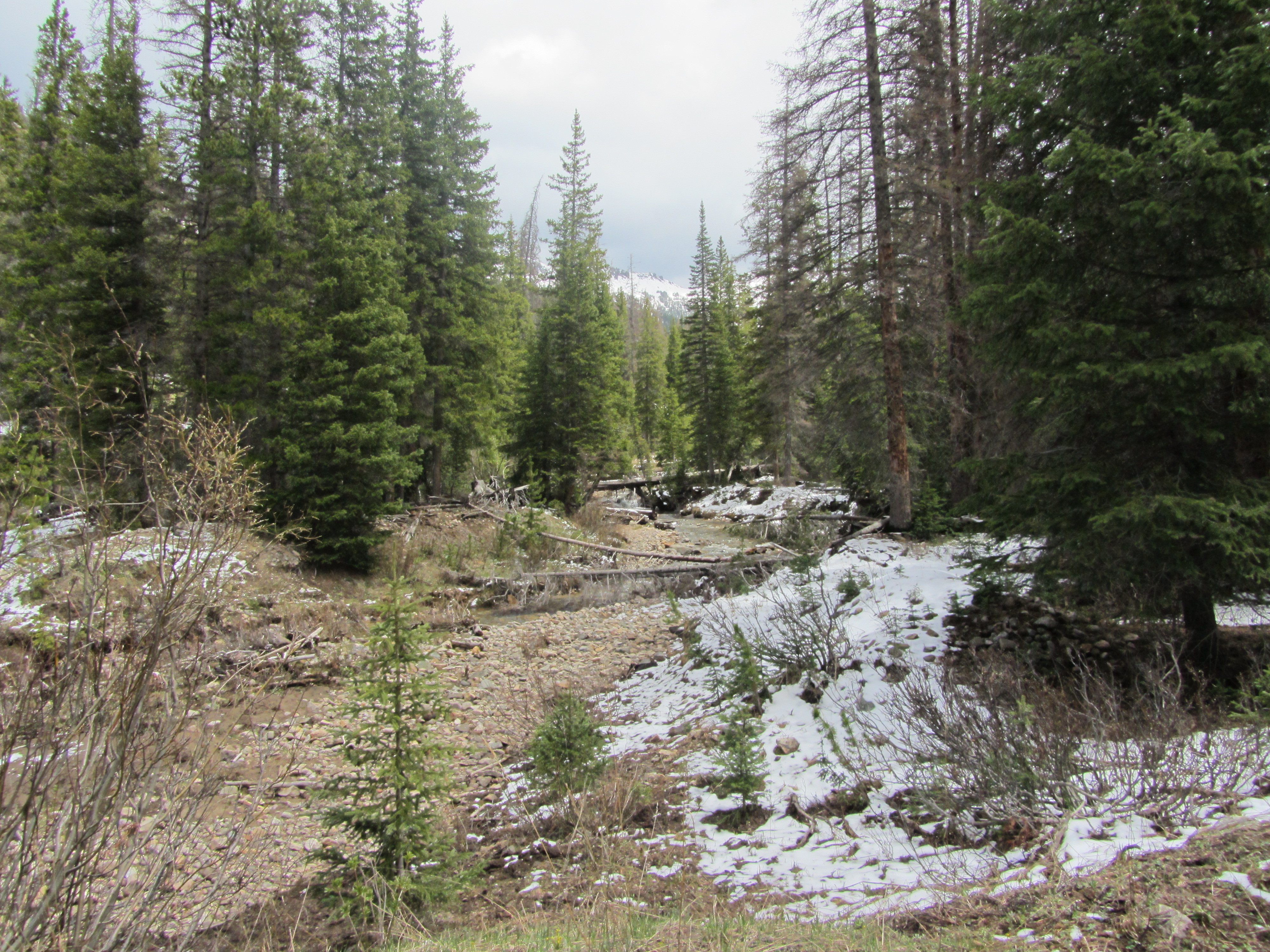What lives in our dirt? A handful of bacterial species dominate soils across the globe.
Published in Ecology & Evolution

To access the paper in Science go to: http://science.sciencemag.org/content/359/6373/320
Global atlases for plants and animals have been available for centuries –e.g., those showing where polar bears or oak forests are on Earth. However, an atlas did not yet exist depicting information on soil bacteria, even for the most dominant taxa found on Earth. We know a fair amount about the major environmental drivers of bacterial species richness in our soils1-3, but we know very little about the major components responsible for such diversity. A single gram of soil contains thousands of species and millions of cells of bacteria4. Thus, if every single soil from Earth contains very different species of bacteria, identifying them and assessing their functional capabilities would be extremely challenging, if not impossible. Luckily, we found that a relatively small amount of bacterial taxa dominate soils across the globe5. More specifically, our findings indicate that around 500 common and abundant phylotypes (2% of all bacterial phylotypes) consistently account for almost half of the soil bacterial communities worldwide. A similar principle is found in the pattern of wealth distribution which is in the hands of < 1% of the population, or where 1% of tree species in the Amazon constitute about 50% of the all the individual trees in this forest6. In our study, we clustered these dominant bacterial taxa into ecological groups, identified their ecological preferences and mapped their distributions to build the first global atlas of soil bacterial taxa.

To undertake our study we used a global collaborative approach, and built a meta-network of soil surveys across the globe. We collected soils from 237 different locations across six continents and 18 countries, spanning an entire range of ecosystem types from deserts to tropical rainfall forests. These soil surveys were carried out by the co-authors in our article over the past decade, using similar soil sampling and storage protocols. This study reinforces the importance of establishing global collaborations to achieve major goals in science, but also the significance of using standardized sampling protocols to allow future researchers to build from existent surveys7. Thanks to this collaborative approach, we were able to identify the bacterial communities and the major properties of our soils using the same lab techniques in the same lab facilities.

Strikingly, most of the dominant bacterial phylotypes found to be common and abundant in soils across the globe remain obscure: they do not match existing genomic records and we have never cultured them in a lab. Put simply, despite their dominance in soils, most of these taxa have not been named and we have little idea about their real function in our soils. It is like if a person would walk into a forest, and did not know how the dominant tree species looks like, the color and shape of this species or the function that this tree species is conducting in the ecosystem (e.g. photosynthesis). Nonetheless, given the dominance of the identified bacterial phylotypes, it is reasonable to assume that they are critically important for ecosystem functioning. Soil bacterial communities as major drivers of key ecosystem processes including nutrient cycling, plant production, litter decomposition or climate regulation is relatively well known. However, the species-specific role of soil bacteria in regulating ecosystem processes –even for dominant taxa– remains largely unexplored and leaves much to be desired.

Our study narrows down the immense diversity of soil bacteria to a “most wanted” list of phylotypes that can now be targeted for genomic and cultivation-based efforts. Such a list forms the basis for targeted future research into the study and manipulation of dominant soil microorganisms in our agricultural and natural ecosystems. Having a list of dominanat taxa for soil environments might also encourage similar work by researchers in other environments such as freshwater and marine systems. Finally, our work allows us to ask important ecological questions about the functional traits that might make these dominant taxa so successful in our soils. Such knowledge is expected to be critical in order to accurately forecast the ecological consequences of ongoing global change.
1. Lauber, C.L. et al. Soil pH as a predictor of soil bacterial community structure at the continental scale: a pyrosequencing-based assessment. Appl Environ Microbiol 75, 5111-5120 (2009).
2. Delgado-Baquerizo, M. et al. Carbon content and climate variability drive global soil bacterial diversity patterns. Ecol Monogr 86, 373–390 (2016).
3. Maestre F.T. et al. Increasing aridity reduces soil microbial diversity and abundance in global drylands. Proc Natl Acad Sci U.S.A 112, 15684–15689 (2015).
4. Bardgett, R.D. van der Putten, W.H. Belowground biodiversity and ecosystem functioning. Nature 515, 505–511 (2014).
5. Delgado-Baquerizo M. et al. A global atlas of the dominant bacteria found in soil. Science 359, 320–325 (2018).
6. Scheffer M et al. Inequality in nature and society. Proc Natl Acad Sci U.S.A 114, 13154–13157 (2017).
7. Ramirez K. et al. Detecting macroecological patterns in bacterial communities across independent studies of global soils. Nature Microbiology 3, 189–196 (2018).



Please sign in or register for FREE
If you are a registered user on Research Communities by Springer Nature, please sign in